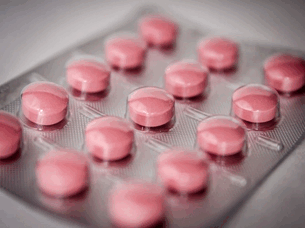ANTIOXIDANT AND HISTOLOGIC RESPONSES OF ARTEMETHER-LUMEFANTRINE IN EXPERIMENTALLY COMPROMISED RATS’ TESTES
Keywords:
Artemether-lumefantrine, magnesium, monosodium glutamate, oxidative response, testes histomorphology, zincAbstract
Aim: The current study assessed the response of MSG and AL on rats' testes histomorphology and homogenate antioxidant markers.
Methodology: Thirty (30) male Wistar rats were allotted to six groups(sample size, n=5) by random sampling and exposed to MSG and AL daily and per oral for 7 days thus: Groups A, distilled water (1 mL Kg−1), B, therapeutic concentration of Artemether-lumefantrine, TAL, (1.14 mg Kg−1AL), C, high dose Artemether-lumefantrine, HAL (5.7 mg Kg−1AL), D, MSG (8000 mg Kg−1), E, TAL (1.14 mg Kg−1AL)+ MSG (8000 mg Kg−1) and F, HAL (5.7 mg Kg−1AL)+ MSG (8000 mg Kg−1). Alterations in the testes histology and antioxidant markers were assessed while data were tested for statistical significance by acceptable protocols.
Results: MSG mono-therapy altered the rats’ testes anti-oxidation mechanism and histology by increasing (p<0.05) glutathione peroxidase (GPX), superoxide dismutase (SOD), catalase (CAT), malondialdehyde (MDA), albumin (ALB), total protein (TP), and magnesium (Mg),but decreasing (p<0.05) zinc (Zn) levels and degenerating spermatids within the seminiferous tubules compared to control, and other treatments (except CAT activity in MSG + HAL-fed group that increased (p<0.05) above that of MSG–fed rats). These responses following TAL and HAL mono-treatments were inconsistent compared to control and MSG mono-therapies. These underscore the proclivity of MSG + HAL co-therapy to up-regulate the apparent dysfunction in CAT metabolism, and the inconsistency in the apparent modulatory responses by AL against effects by MSG mono-therapy in the rats’ testes.
Conclusion: AL caused inconsistent modulation of alterations in rats’ testes histology and antioxidant function markers due to MSG assault. The modulation may not be sustainable and the alterations may be instead being spiked warranting caution in co-feeding AL and MSG to rats.

Peer Review History:
Received 5 December 2023; Revised 28 January 2024; Accepted 29 February; Available online 15 March 2024
Academic Editor: Dr. Amany Mohamed Alboghdadly , Ibn Sina National College for Medical Studies in Jeddah, Saudi Arabia, amanyalboghdadly@gmail.com
, Ibn Sina National College for Medical Studies in Jeddah, Saudi Arabia, amanyalboghdadly@gmail.com
Reviewers:
 Dr. Rima Benatoui, Applied Neuroendocrinology Laboratory, Faculty of Sciences, University of Annaba, Algeria. benattouiryma@gmail.com
Dr. Rima Benatoui, Applied Neuroendocrinology Laboratory, Faculty of Sciences, University of Annaba, Algeria. benattouiryma@gmail.com
 Dr. Tamer Elhabibi, Suez Canal University, Egypt, tamer_hassan@pharm.suez.edu.eg
Dr. Tamer Elhabibi, Suez Canal University, Egypt, tamer_hassan@pharm.suez.edu.eg
Downloads

Published
How to Cite
Issue
Section

This work is licensed under a Creative Commons Attribution-NonCommercial 4.0 International License.









 .
.